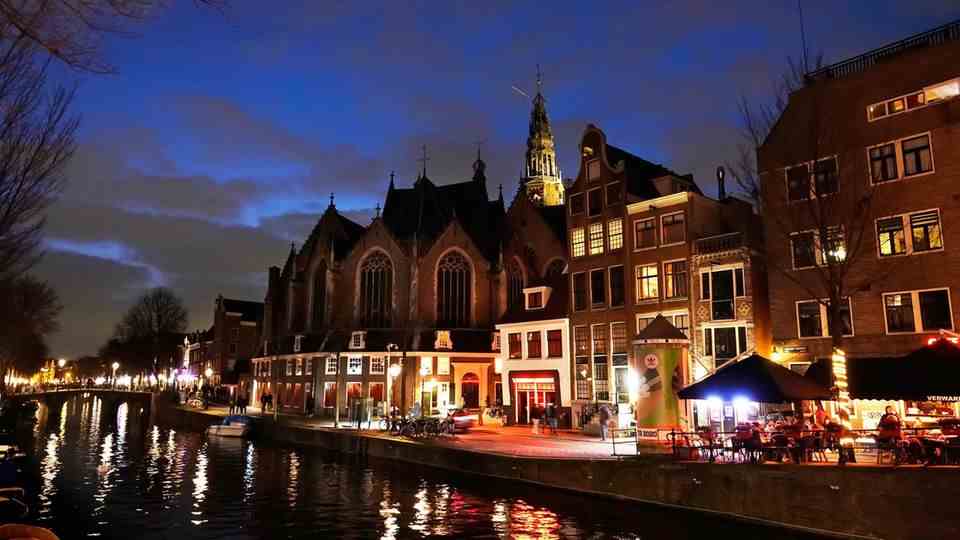Mining
Falun red – how the color from an old mine became a symbol of Sweden
Red areas and white bars – this look characterizes Sweden.
©Wiki/Commons
Europe’s largest copper mine once stood in Falun, where the classic red color was produced. But it only became a symbol for Sweden when people wanted to fight poverty in the cities.
The whole world knows the red color with which the Swedes paint their wooden houses. Today there is a whole palette of “Sweden colors”, but the origin is the Falun red. In the time before modern chemistry, it was not at all easy to obtain bright colours. Many were created from mineral soils that were specially treated – mostly they were burned. So does the Falun red.
The color is named after its origin, the Falun copper mine in Sweden. It has been in operation since the 9th century, i.e. since the early Middle Ages. This was the largest copper mine in Europe and brought prosperity to the region. “In the 17th century, two-thirds of the western world’s copper production came from Falun,” Johanna Nybelius, the mine’s archaeologist and museum educator, told Smithsonian Magazine. “At that time Sweden was one of the great powers in Europe and everything was paid for with copper from Falun”. But it seems that Sweden’s policy of expansion during the Thirty Years’ War led to overexploitation of the mine. At the end of the 17th century the mine was exhausted.
Product from the remains of the mine
That’s when the idea for the color came up. Actually, the base material of the paint was a waste product from the mine. Falunrot is made from rock debris and ferrous ores. When the iron weathers to iron oxide, you have the base for the pigment. The oxide is washed out, then dried again and finally fired. The bright red color only develops from the yellowish material in the oven. The dry pigment is ground and mixed with water, flour and linseed oil to produce paint that can be brushed.
Falu Rödfärg still produces the traditional paint in the mine today. “For the first 200 years it was a light color because the kilns weren’t that hot,” said Martin Jansson, the operations manager. Today, thanks to modern ovens, you can make different shades of Falun red. In earlier times, bright red was more than enough, because intensely bright colors were difficult to produce and sought after. In addition, the color is an effective preservative. “The paint contains iron and copper vitriol,” says Nybelius. “Iron is good for preservation and copper is a fungicide.” These substances mean that the corpses of buried miners from the mine’s active days are now being recovered mummified. Compared to modern paints, the Falun red allows the wood to breathe. “If you work with a modern plastic paint you get a really waterproof layer and you have problems with mold.”
Own house for the working class
The red had been popular since the 18th century because it gave a wooden house the look of more expensive brick. But it only shaped Sweden with a social housing project. With industrialization and the growing population in the cities, the “social question” of the 19th century also arose in Sweden: pauperism. In order to alleviate poverty in the cities and to create better housing conditions, a law was passed in 1904 that provided loans for the construction of one’s own houses in the country. Any worker who turned up sober received financial help to build their own home. Alcoholism was rightly considered a major public health hazard in Sweden at the time. These cottages were mostly painted red, making Falunrot the Swedish color par excellence.
The traditional color still exists, but the waste mineral from the mine is limited. It will still be enough for 80 to 100 years. Because of breathing, the color is still interesting today. Weathered, rough-sawn wood can also be simply painted over with Falunrot. Although the color is not washable, it does not crack or crack with age. There is only one abrasion. This makes repainting easier. The old paint just needs to be brushed off. The original color is, contrary to what one might expect, even comparatively cheap.
Source: Smithsonian Magazine; Falu Rödfärg
also read
House of Clicks – This is the dream house of every Swede
Recycling for living – couple built this luxury house from containers
Twelve years – then the house next door was thrown away
Solardome – Norwegians have placed their dream house under this cheese cover





